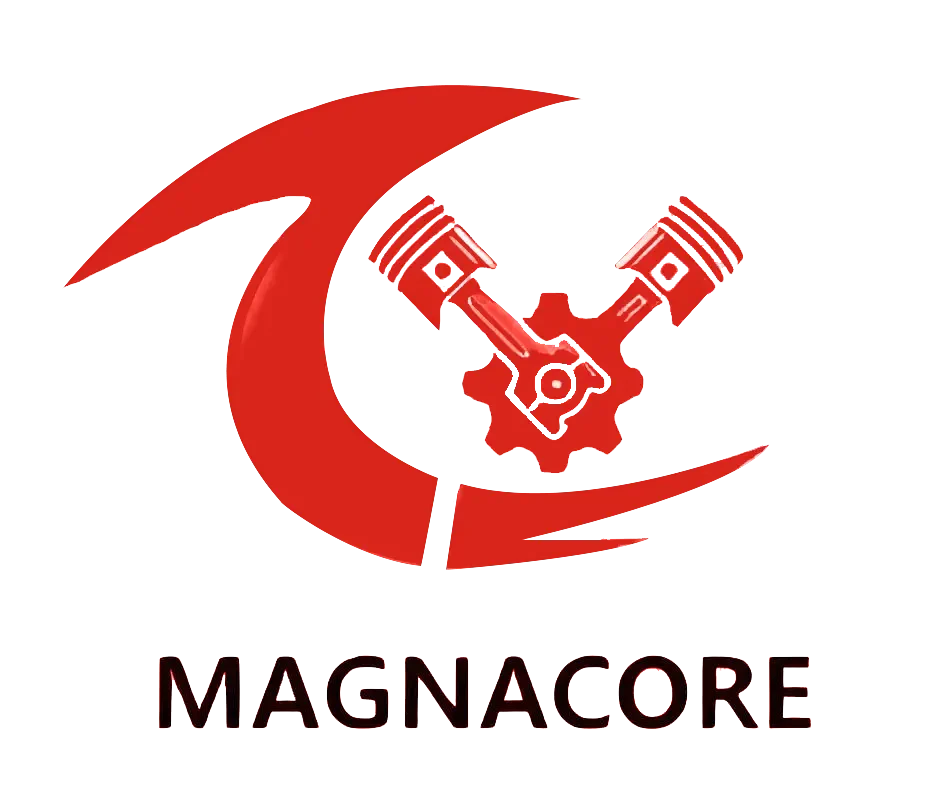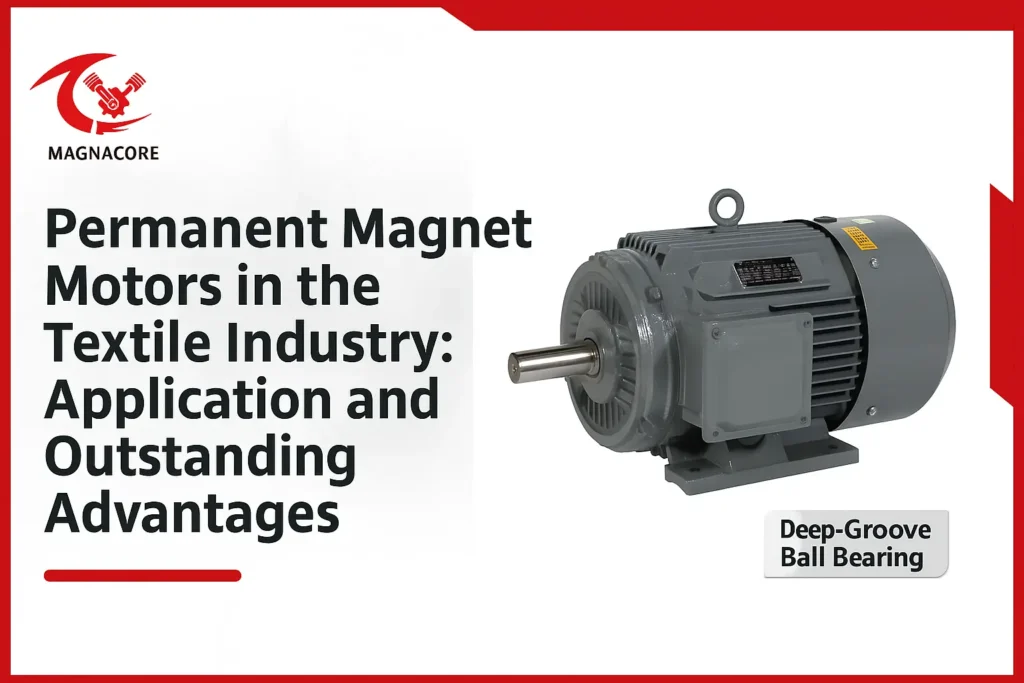In the evolving process of the textile industry, the demands for precise speed control, strong torque output, and continuous and stable operation have become increasingly prominent.
Permanent magnet (PM) motors, with their high – efficiency operation and a series of outstanding advantages, have gradually become the ideal choice in the textile field.
Compared with traditional induction motors, permanent magnet motors, especially permanent magnet synchronous motors (PMSMs), with their excellent performance, bring significant benefits to all aspects of textile manufacturing, from spinning, weaving to dyeing and finishing.
Application of Permanent Magnet Motors in the Textile Industry
Spinning Machines
In ring – spinning and rotor – spinning processes, precise control of the spindle speed is the core factor determining yarn quality and production efficiency.
Permanent magnet motors, especially when used in conjunction with variable – frequency drives (VFDs), exhibit unparalleled advantages.
They can provide the dynamic speed control required for rapid acceleration and deceleration, as well as strong torque, not only significantly accelerating the yarn – changing speed but also effectively reducing the energy consumption per unit of yarn.
For spinning machine manufacturers, it is crucial to seek reliable suppliers and comprehensive system solutions, which can ensure that the equipment achieves optimal performance from the source and helps enterprises stand out in the fierce market competition.
Looms
Modern looms impose strict requirements on the shuttle or rapier mechanisms, such as high – speed operation, precise positioning, and rapid reversal.
Permanent magnet motors, with their high power density and excellent dynamic response capabilities, perfectly meet these complex cyclic requirements.
Driven by permanent magnet motors, the weaving speed of looms is significantly increased, fabric defects are greatly reduced, and the overall output achieves a qualitative leap.
When selecting motors for looms, it is necessary to focus on the matching degree of performance and application, ensuring that the dynamic performance of the motor closely matches the operating requirements of the loom, providing a solid guarantee for the production of high – quality fabrics.
Knitting Machines
Whether it is a circular knitting machine or a flat knitting machine, permanent magnet motors play a key role.
Their smooth and precise speed and torque control lay a solid foundation for the stable formation of coils, thus producing high – quality fabrics.
In addition, the low – vibration characteristics of permanent magnet motors not only create a quieter working environment but also greatly contribute to extending the service life of the machine, reducing the equipment maintenance costs for knitting enterprises and improving production efficiency.
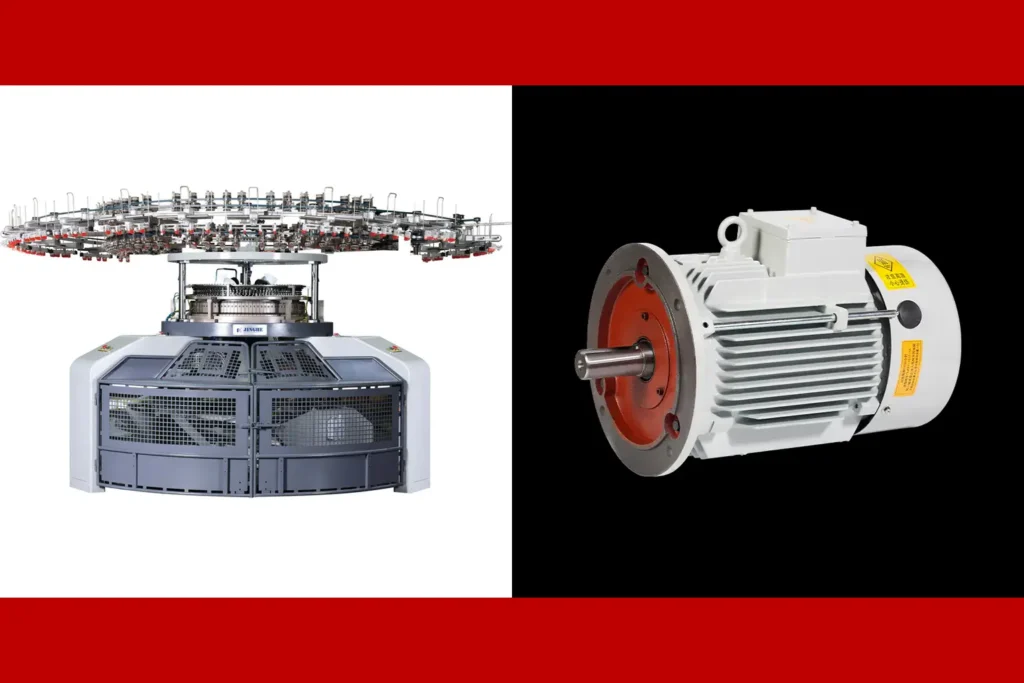
Dyeing and Finishing Machinery
In the dyeing and finishing processes, such as washing, drying, and calendering, not only precise speed synchronization is required, but they often face challenges such as a humid environment.
Permanent magnet motors, with their robust design and high – efficiency performance, can still operate stably even when dealing with variable loads and high – inertia systems, minimizing energy waste.
When investing in these long – running and energy – intensive processes, a comprehensive cost and return – on – investment (ROI) analysis of permanent magnet motors and traditional alternatives will reveal that permanent magnet motors can save a large amount of costs for enterprises in the long – term use, making them a wise choice for dyeing and finishing enterprises to achieve sustainable development.
Auxiliary Equipment
Inside textile factories, auxiliary equipment such as fans, pumps, and compressors can also be driven by high – efficiency permanent magnet motors.
This not only improves the operating efficiency of these devices but also helps to achieve the overall energy – saving goal of the factory.
By comprehensively applying permanent magnet motors, textile factories can build an efficient and energy – saving power system, responding actively to the call of the times for green development while improving production efficiency.
Key Advantages of permanent magnet motors in the Textile Industry
In the current context where the textile industry faces operational challenges and sustainable development goals, the adoption of permanent magnet motors has become a highly forward – looking strategic choice.
The numerous benefits it brings are like a beacon illuminating the path of the industry’s progress.
Excellent Energy Efficiency, an Economical Choice
Compared with traditional induction motors, permanent magnet motors are unique.
They ingeniously eliminate rotor current losses and maintain high efficiency within a wide operating range, which significantly reduces total energy consumption.
The direct result is that it saves considerable electricity costs for enterprises and significantly cuts down the total cost of ownership.
From the perspective of cost consideration and return on investment, the economic advantage of permanent magnet motors is clear, undoubtedly making it the most cost – effective choice for textile enterprises, powerfully demonstrating the importance of being cost – conscious and focusing on cost – effectiveness in the development of the industry.
Precise Control, Quality Assurance
Permanent magnet motors, with their precise speed and torque control capabilities, high – dynamic response, and extremely low torque ripple.
Play a pivotal role in the textile production process. In the yarn production process, it can precisely maintain the yarn tension, ensuring that each yarn is of uniform thickness.
In the fabric manufacturing process, it helps to maintain fabric consistency and improve the overall quality; and when coordinating the operation of various machine components, it achieves seamless synchronization.
This excellent precise control ability not only directly promotes the improvement of product quality but also greatly reduces waste in the production process, profoundly highlighting the significance of paying attention to performance and application requirements for textile enterprises.
Compact Design, Space Optimization
Permanent magnet motors perform outstandingly in terms of power density and can output more power within a given frame size.
This prominent advantage brings new possibilities to the design of textile machines, making the machine design more compact and lightweight.
For textile factories where space is at a premium, the space – saving feature of permanent magnet motors is like a golden key to optimizing the factory layout, helping enterprises to plan the production space more reasonably, improve space utilization, and thus enhance the overall production efficiency.
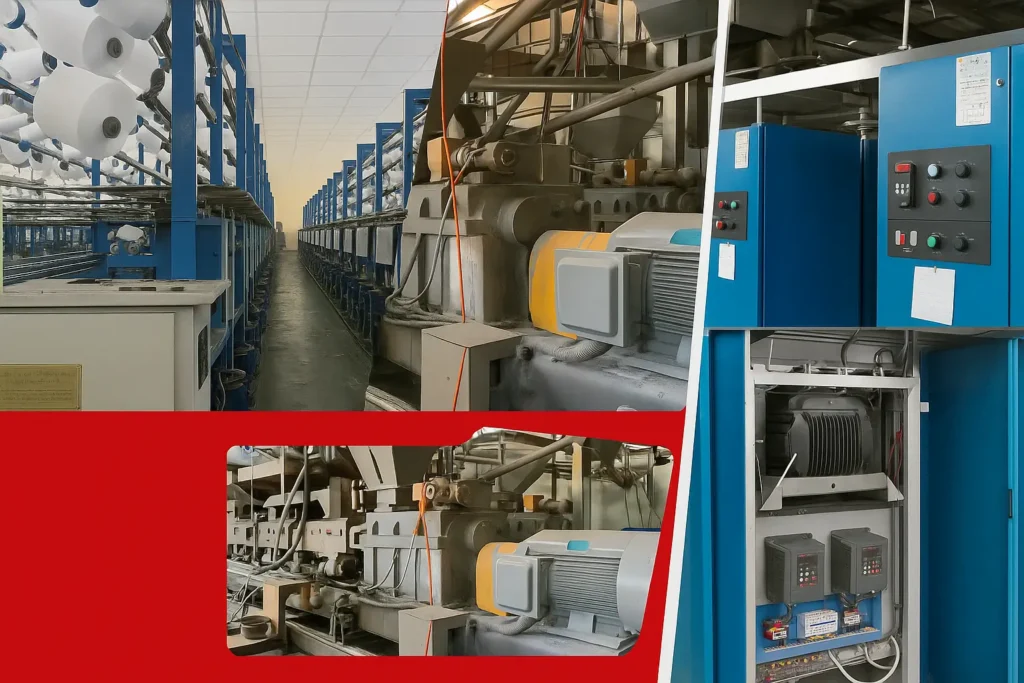
Reliable and Durable, Stable Operation
Brushless permanent magnet motors, with their unique structural design, abandon brushes and rotor windings, resulting in a robust and durable quality.
Moreover, they operate at a lower temperature, enabling them to operate stably in the relatively harsh environment of the textile industry.
The robust structure and lower operating temperature work together to greatly reduce maintenance requirements and significantly improve the reliability of the motor.
For textile enterprises that pursue stable production and aim to reduce maintenance costs, permanent magnet motors are undoubtedly reliable partners worthy of trust.
Green and Environment – Friendly, Keeping Pace with the Trend
In the context of the global strong advocacy for sustainable development, the lower energy consumption of permanent magnet motors means fewer greenhouse gas emissions.
This feature not only perfectly aligns with the global sustainable development initiative but also helps textile manufacturers easily meet the increasingly strict energy efficiency regulations.
By choosing permanent magnet motors, every step taken by textile enterprises is a powerful commitment to a green future, demonstrating the corporate responsibility in the journey of environmental protection and contributing positively to the sustainable development of the industry.
With its outstanding performance in terms of energy efficiency, precise control, space utilization, reliability, and environmental protection, permanent magnet motors fully meet the development needs of the textile industry and become the core driving force to promote the textile industry towards higher – quality development.
FAQS about Permanent Magnet Motors in the Textile Industry
How long is the service life of permanent magnet motors in textile applications?
The service life of permanent magnet motors in the textile industry is affected by various factors. Generally speaking, if the operating environment is suitable and maintenance is proper, its service life can reach 10 – 15 years.
First, the operating environment is crucial. If the humidity, temperature in the textile workshop are moderate and the dust is less, the risk of erosion or demagnetization of the internal electronic components and permanent magnets of the motor is low.
Conversely, a humid environment may cause rusting of the internal components of the motor, high temperature will accelerate the demagnetization of the permanent magnets, and a dusty environment is likely to block the heat dissipation of the motor, all of which may shorten the motor’s life.
Second, the load situation also has an impact. If the motor operates in an overloaded state for a long time, the windings will heat up, accelerating the aging of the insulation and reducing the service life. While operating within the normal load range, the motor can maintain a good condition.
Third, maintenance is of vital importance.
Regularly cleaning and inspecting the motor and promptly replacing worn – out parts can effectively extend its service life.
For example, regularly cleaning the dust on the surface and inside of the motor to ensure the smooth heat – dissipation channels; regularly checking the wiring terminals of the motor to prevent looseness from causing failures.
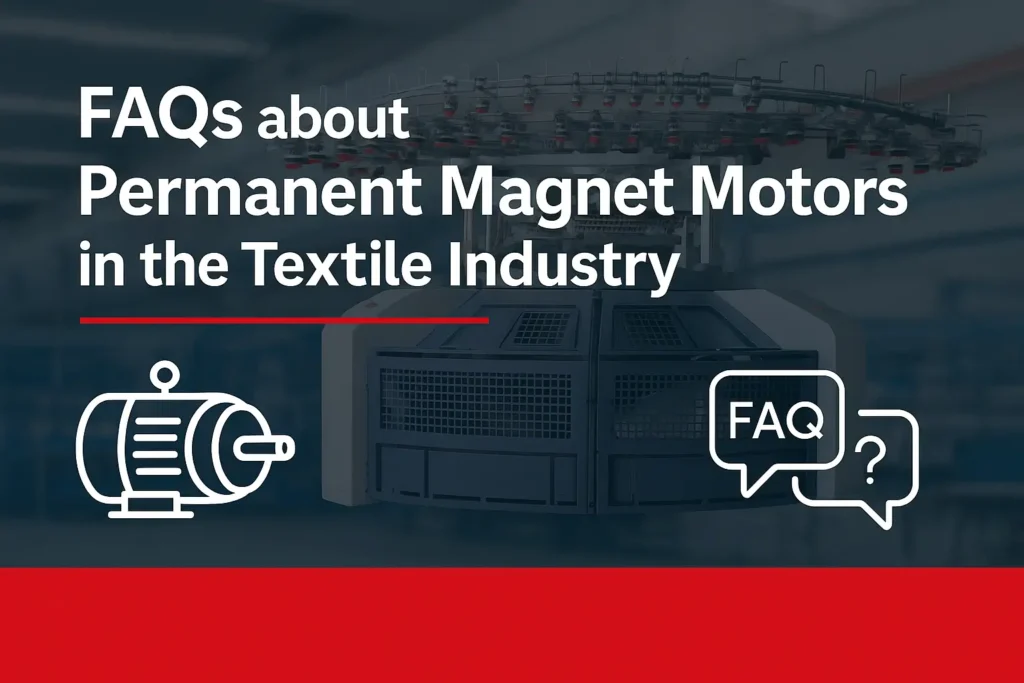
How do permanent magnet motors compare with induction motors in textile applications?
1.Energy Efficiency
Permanent magnet motors are significantly superior to induction motors.
By eliminating rotor current losses, permanent magnet motors maintain high efficiency over a wide operating range, which can reduce total energy consumption by 20% – 30%.
In contrast, the rotors of induction motors require exciting current, resulting in additional losses and relatively lower efficiency.
2.Precision and Control
Permanent magnet motors have precise speed and torque control capabilities, with fast dynamic response and small torque ripple.
In textile production, they can better maintain yarn tension and fabric consistency, reducing the defective rate.
Induction motors are relatively inferior in the precision of speed and torque control and have difficulty meeting the high – precision requirements of the textile industry.
3.Power Density
Permanent magnet motors have a higher power density.
They can provide more power in the same frame size, which is conducive to the compact design of textile machines.
Induction motors have a lower power density and often require more space to achieve the same power output.
4.Reliability
Brushless permanent magnet motors have a robust structure, eliminating the need for brushes and rotor windings, reducing failure points, and operating at a lower temperature, so they have higher reliability in the textile environment.
The brushes and rotor windings of induction motors are prone to wear during long – term operation and require more frequent maintenance.
Who are the leading manufacturers of permanent magnet motors for the textile industry?
Jiayu Motors: Jiayu Motors’ permanent magnet motors are renowned for their high performance and reliability.
For the textile industry, Jiayu Motors provides customized solutions that can meet the special requirements of different textile processes for motors, such as high – speed and high – precision requirements.
How do permanent magnet motors improve the quality of fabric production?
Precise Speed and Torque Control
Permanent magnet motors can precisely control speed and torque. During the fabric production process, they can ensure a constant yarn tension.
For example, during the weaving process, stable yarn tension can prevent problems such as uneven tightness and wrinkles in the fabric, making the fabric pattern clearer and more uniform, thus improving the overall quality of the fabric.
Low Torque Ripple
Permanent magnet motors have a small torque ripple, which can ensure the stable operation of various machine components.
During the knitting process, this helps to stabilize the formation of coils, reducing the situation of uneven coil sizes and making the fabric surface smoother, improving the fabric quality.
High Dynamic Response
The high – dynamic response characteristic of permanent magnet motors enables them to quickly respond to changes in the production process.
For example, in the printing and dyeing process, when the conveying speed or tension of the fabric changes, the permanent magnet motor can adjust rapidly to ensure the uniformity of printing and dyeing, avoiding quality problems such as color spots and color streaks.
What are the main benefits that textile manufacturers can obtain from switching to permanent magnet motors?
Energy Conservation and Consumption Reduction
The high – efficiency and energy – saving characteristics of permanent magnet motors can significantly reduce the electricity costs of textile mills.
In the long run, it can save a large amount of costs for enterprises and improve their economic efficiency.
Product Quality Improvement
With advantages such as precise speed and torque control and low torque ripple, permanent magnet motors help produce higher – quality fabrics, reduce the defective rate, and enhance the competitiveness of enterprises in the market.
Maintenance Cost Reduction
Brushless permanent magnet motors have a simple and robust structure, fewer failure points, and a low operating temperature.
They have fewer maintenance requirements in the textile environment, which can reduce the maintenance costs and downtime of enterprises and improve production efficiency.
Meeting Environmental Requirements
Lower energy consumption means fewer greenhouse gas emissions.
By using permanent magnet motors, textile manufacturers can better meet the global sustainable development initiative and strict energy efficiency regulations, enhancing the corporate social image.
